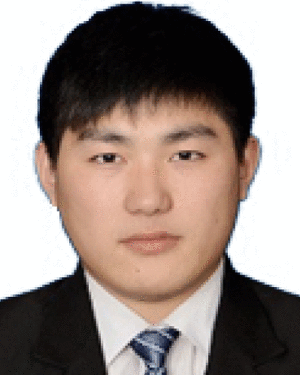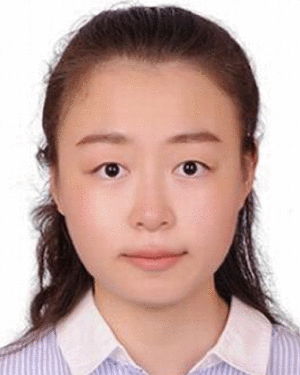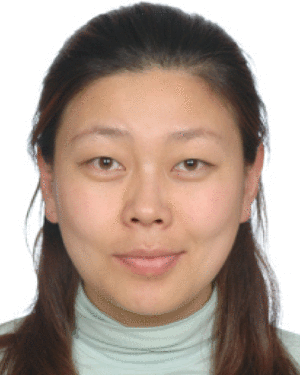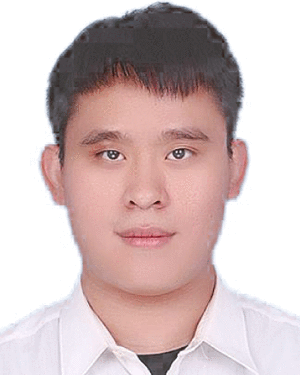Abstract:
Remote sensing images contain various land surface scenes and different scales of ground objects, which greatly increases the difficulty of super-resolution tasks. The ex...Show MoreMetadata
Abstract:
Remote sensing images contain various land surface scenes and different scales of ground objects, which greatly increases the difficulty of super-resolution tasks. The existing deep learning-based methods cannot solve this problem well. To achieve high-quality super-resolution of remote sensing images, a residual aggregation and split attentional fusion network (RASAF) is proposed in this article. It is mainly divided into the following three parts. First, a split attentional fusion block is proposed. It uses a basic split–fusion mechanism to achieve cross-channel feature group interaction, allowing the method to adapt to various land surface scene reconstructions. Second, to fully exploit multiscale image information, a hierarchical loss function is used. Third, residual learning is used to reduce the difficulty of training in super-resolution tasks. However, the respective residual branch features are used quite locally and fail to represent the real value. A residual aggregation mechanism is used to aggregate the local residual branch features to generate higher quality local residual branch features. The comparison of RASAF with some classical super-resolution methods using two widely used remote sensing datasets showed that the RASAF achieved better performance. And it achieves a good balance between performance and model parameter number. Meanwhile, the RASAF’s ability to support multilabel remote sensing image classification tasks demonstrates its usefulness.
Published in: IEEE Journal of Selected Topics in Applied Earth Observations and Remote Sensing ( Volume: 14)
Funding Agency:

College of Software, Xinjiang University, Ürümqi, China
Key Laboratory of Signal Detection and Processing in Xinjiang Uygur Autonomous Region, Ürümqi, China
Key Laboratory of Software Engineering, Ürümqi, China
Long Chen received the bachelor’s degree in geographic information science from the Shandong University of Science and Technology, Qingdao, China, in 2018. He is currently working toward the master’s degree in software engineering with Xinjiang University, Ürümqi, China.
His research interests include deep learning and single image super-resolution.
Long Chen received the bachelor’s degree in geographic information science from the Shandong University of Science and Technology, Qingdao, China, in 2018. He is currently working toward the master’s degree in software engineering with Xinjiang University, Ürümqi, China.
His research interests include deep learning and single image super-resolution.View more

College of Information Science and Engineering, Xinjiang University, Ürümqi, China
Key Laboratory of Signal Detection and Processing in Xinjiang Uygur Autonomous Region, Ürümqi, China
Key Laboratory of Software Engineering, Ürümqi, China
Hui Liu received the B.S. degree in software engineering in 2014, the M.E. degree in software engineering from the College of Software, Xinjiang University, Ürümqi, China, in 2017, where she is currently working toward the Ph.D. degree in computer science and technology.
Her research interests include deep learning and opportunistic networks and the processing of remote sensing image data.
Hui Liu received the B.S. degree in software engineering in 2014, the M.E. degree in software engineering from the College of Software, Xinjiang University, Ürümqi, China, in 2017, where she is currently working toward the Ph.D. degree in computer science and technology.
Her research interests include deep learning and opportunistic networks and the processing of remote sensing image data.View more

College of Software, Xinjiang University, Ürümqi, China
Key Laboratory of Signal Detection and Processing in Xinjiang Uygur Autonomous Region, Ürümqi, China
Key Laboratory of Software Engineering, Ürümqi, China
Minhang Yang received the bachelor’s degree in software engineering from the Xi’an University of Technology, Xi’an, China, in 2019. She is currently working toward the master’s degree in software engineering with Xinjiang University, Ürümqi, China.
Her research interests include deep learning and multilabel image classification.
Minhang Yang received the bachelor’s degree in software engineering from the Xi’an University of Technology, Xi’an, China, in 2019. She is currently working toward the master’s degree in software engineering with Xinjiang University, Ürümqi, China.
Her research interests include deep learning and multilabel image classification.View more

College of Software, Xinjiang University, Ürümqi, China
Key Laboratory of Signal Detection and Processing in Xinjiang Uygur Autonomous Region, Ürümqi, China
Key Laboratory of Software Engineering, Ürümqi, China
Yurong Qian received bachelor’s and master’s degrees in computer science and technology from Xinjiang University, Ürümqi, China, in 2000, and the doctorate degree in biology from Nanjing University, Nanjing, China, in 2010.
From 2012 to 2013, she was a Postdoctoral Fellow with the Department of Electronics and Computer Engineering, Hanyang University, South Korea. She is currently a Professor with the School of Software, X...Show More
Yurong Qian received bachelor’s and master’s degrees in computer science and technology from Xinjiang University, Ürümqi, China, in 2000, and the doctorate degree in biology from Nanjing University, Nanjing, China, in 2010.
From 2012 to 2013, she was a Postdoctoral Fellow with the Department of Electronics and Computer Engineering, Hanyang University, South Korea. She is currently a Professor with the School of Software, X...View more

College of Mathematics and System Sciences, Xinjiang University, Ürümqi, China
Zhengqing Xiao received the Ph.D. degree in geographic information system from Beijing Normal University, Beijing, China, in 2011.
He is currently working with the College of Mathematics and System Sciences, Xinjiang University, Ürümqi, China. His research interests include big data analysis, image processing, and complex system modelling.
Zhengqing Xiao received the Ph.D. degree in geographic information system from Beijing Normal University, Beijing, China, in 2011.
He is currently working with the College of Mathematics and System Sciences, Xinjiang University, Ürümqi, China. His research interests include big data analysis, image processing, and complex system modelling.View more

College of Software, Xinjiang University, Ürümqi, China
Key Laboratory of Signal Detection and Processing in Xinjiang Uygur Autonomous Region, Ürümqi, China
Key Laboratory of Software Engineering, Ürümqi, China
Xiwu Zhong received the bachelor’s degree in network engineering from Huizhou University, Huizhou, China, in 2018. He is currently working toward the master’s degree, majoring in software engineering with Xinjiang University, Ürümqi, China.
His research interests include deep learning and remote sensing image processing.
Xiwu Zhong received the bachelor’s degree in network engineering from Huizhou University, Huizhou, China, in 2018. He is currently working toward the master’s degree, majoring in software engineering with Xinjiang University, Ürümqi, China.
His research interests include deep learning and remote sensing image processing.View more

College of Software, Xinjiang University, Ürümqi, China
Key Laboratory of Signal Detection and Processing in Xinjiang Uygur Autonomous Region, Ürümqi, China
Key Laboratory of Software Engineering, Ürümqi, China
Long Chen received the bachelor’s degree in geographic information science from the Shandong University of Science and Technology, Qingdao, China, in 2018. He is currently working toward the master’s degree in software engineering with Xinjiang University, Ürümqi, China.
His research interests include deep learning and single image super-resolution.
Long Chen received the bachelor’s degree in geographic information science from the Shandong University of Science and Technology, Qingdao, China, in 2018. He is currently working toward the master’s degree in software engineering with Xinjiang University, Ürümqi, China.
His research interests include deep learning and single image super-resolution.View more

College of Information Science and Engineering, Xinjiang University, Ürümqi, China
Key Laboratory of Signal Detection and Processing in Xinjiang Uygur Autonomous Region, Ürümqi, China
Key Laboratory of Software Engineering, Ürümqi, China
Hui Liu received the B.S. degree in software engineering in 2014, the M.E. degree in software engineering from the College of Software, Xinjiang University, Ürümqi, China, in 2017, where she is currently working toward the Ph.D. degree in computer science and technology.
Her research interests include deep learning and opportunistic networks and the processing of remote sensing image data.
Hui Liu received the B.S. degree in software engineering in 2014, the M.E. degree in software engineering from the College of Software, Xinjiang University, Ürümqi, China, in 2017, where she is currently working toward the Ph.D. degree in computer science and technology.
Her research interests include deep learning and opportunistic networks and the processing of remote sensing image data.View more

College of Software, Xinjiang University, Ürümqi, China
Key Laboratory of Signal Detection and Processing in Xinjiang Uygur Autonomous Region, Ürümqi, China
Key Laboratory of Software Engineering, Ürümqi, China
Minhang Yang received the bachelor’s degree in software engineering from the Xi’an University of Technology, Xi’an, China, in 2019. She is currently working toward the master’s degree in software engineering with Xinjiang University, Ürümqi, China.
Her research interests include deep learning and multilabel image classification.
Minhang Yang received the bachelor’s degree in software engineering from the Xi’an University of Technology, Xi’an, China, in 2019. She is currently working toward the master’s degree in software engineering with Xinjiang University, Ürümqi, China.
Her research interests include deep learning and multilabel image classification.View more

College of Software, Xinjiang University, Ürümqi, China
Key Laboratory of Signal Detection and Processing in Xinjiang Uygur Autonomous Region, Ürümqi, China
Key Laboratory of Software Engineering, Ürümqi, China
Yurong Qian received bachelor’s and master’s degrees in computer science and technology from Xinjiang University, Ürümqi, China, in 2000, and the doctorate degree in biology from Nanjing University, Nanjing, China, in 2010.
From 2012 to 2013, she was a Postdoctoral Fellow with the Department of Electronics and Computer Engineering, Hanyang University, South Korea. She is currently a Professor with the School of Software, Xinjiang University. Her research interests include computational intelligence such as big data processing, image processing, and artificial neural networks.
Dr. Qian is a Senior Member of the Chinese Computer Federation. In 2015, she was trained as a Young Scientific and Technological Innovation Talent by the Science and Technology Department, Xinjiang, China.
Yurong Qian received bachelor’s and master’s degrees in computer science and technology from Xinjiang University, Ürümqi, China, in 2000, and the doctorate degree in biology from Nanjing University, Nanjing, China, in 2010.
From 2012 to 2013, she was a Postdoctoral Fellow with the Department of Electronics and Computer Engineering, Hanyang University, South Korea. She is currently a Professor with the School of Software, Xinjiang University. Her research interests include computational intelligence such as big data processing, image processing, and artificial neural networks.
Dr. Qian is a Senior Member of the Chinese Computer Federation. In 2015, she was trained as a Young Scientific and Technological Innovation Talent by the Science and Technology Department, Xinjiang, China.View more

College of Mathematics and System Sciences, Xinjiang University, Ürümqi, China
Zhengqing Xiao received the Ph.D. degree in geographic information system from Beijing Normal University, Beijing, China, in 2011.
He is currently working with the College of Mathematics and System Sciences, Xinjiang University, Ürümqi, China. His research interests include big data analysis, image processing, and complex system modelling.
Zhengqing Xiao received the Ph.D. degree in geographic information system from Beijing Normal University, Beijing, China, in 2011.
He is currently working with the College of Mathematics and System Sciences, Xinjiang University, Ürümqi, China. His research interests include big data analysis, image processing, and complex system modelling.View more

College of Software, Xinjiang University, Ürümqi, China
Key Laboratory of Signal Detection and Processing in Xinjiang Uygur Autonomous Region, Ürümqi, China
Key Laboratory of Software Engineering, Ürümqi, China
Xiwu Zhong received the bachelor’s degree in network engineering from Huizhou University, Huizhou, China, in 2018. He is currently working toward the master’s degree, majoring in software engineering with Xinjiang University, Ürümqi, China.
His research interests include deep learning and remote sensing image processing.
Xiwu Zhong received the bachelor’s degree in network engineering from Huizhou University, Huizhou, China, in 2018. He is currently working toward the master’s degree, majoring in software engineering with Xinjiang University, Ürümqi, China.
His research interests include deep learning and remote sensing image processing.View more

